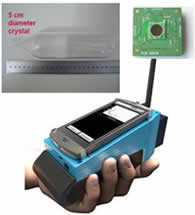The Countering Weapons of Mass Destruction (CWMD) Office was established in December 2017 by consolidating primarily the Domestic Nuclear Detection Office, a majority of the Office of Health Affairs, as well as other DHS elements.
For current information related to CWMD, please visit the following:

Research and development is critical to enabling the success of the Department of Homeland Security (DHS) and its nuclear security mission partners. The Domestic Nuclear Detection Office (DNDO) leads the Department’s efforts in the development of near- and long-term radiological and nuclear detection capabilities.
Near-term development includes the engineering, production, characterization, and deployment of current and next-generation nuclear detection systems in support of the nuclear security end-user community.
Long-term research and development addresses significant architectural and technical challenges that remain unresolved in the short term and that would have a dramatic and positive impact on the Nation’s ability to detect, identify, localize, and interdict nuclear and radiological threats.
To support these efforts, DNDO works closely with DHS operational components and international, federal, state, local, tribal, and territorial partners to understand operational needs, formulate requirements and develop technologies advancing capabilities in the field. These advanced technologies are developed by industry, national laboratories, and academia.
New technologies are designed to withstand various operating environments from desert to sea. The technologies will improve the distance and accuracy of detection, information processing speed and the packaging and transmitting of alarm-event data. These efforts are essential in helping the nation improve its ability to detect and interdict nuclear threats.
